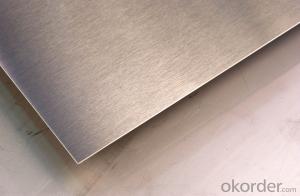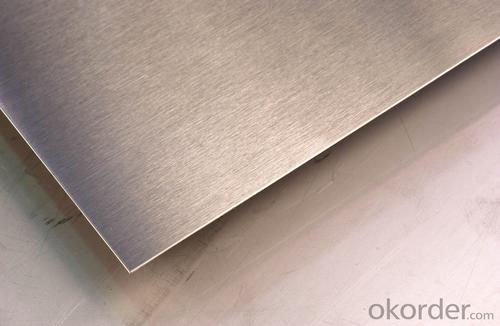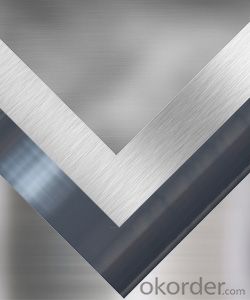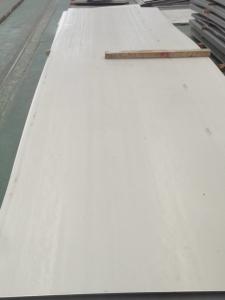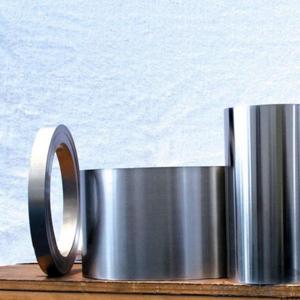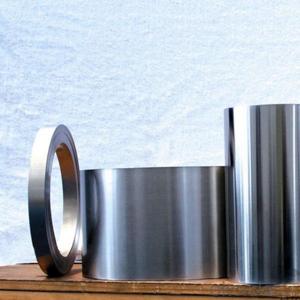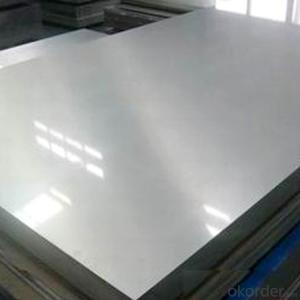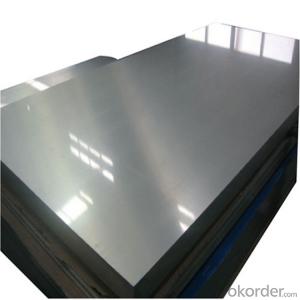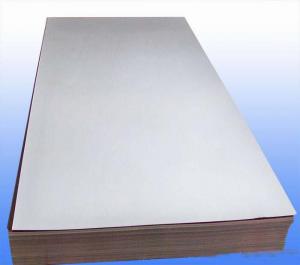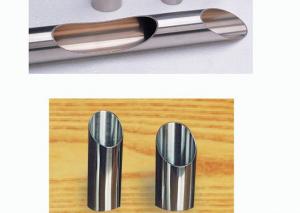316 Hot Rolled Stainless Steel Sheet / Plate
- Loading Port:
- Shanghai
- Payment Terms:
- TT OR LC
- Min Order Qty:
- 1 m.t.
- Supply Capability:
- 20000 m.t./month
OKorder Service Pledge
OKorder Financial Service
You Might Also Like
Specification
316 Hot Rolled Stainless Steel Sheet / Plate
Packaging Details:Wooden pallets,water proof paper-20'GP or 40'GP for stainless steel sheet.
Delivery Detail:within 5-7 days after receiving the deposit
1. Specifications about stainless steel sheet
Commodity | Professional 430 201 202 304 304l 316 316l 321 310s 309s 904l stainless steel sheet |
Grade | 201,202,304,304L,316,316L,310S,309S,321,301,310,410,420,430,904L |
Brand | TISCO ,BAOSTEEL,POSCO,JISCO,LISCO |
Certification | SGS,BV,IQI,TUV,ISO,etc |
Thickness | 0.2mm-150mm |
Width | 1000,1219,1250,1500mm, or as your requirements |
Length | 2000,2438,2500,3000,6000mm, or as your requirements |
Surface | No.1, 2B, BA, 8K Mirror, Hairline,satin, Embossed,brush,No.4,HL,matt,pvc film,laser film. |
Standard | ASTM,AISI,SUS,JIS,EN,DIN,GB, ASME,etc |
Delivery time | 5-7 days after confirming the order |
MOQ | 1 Ton |
Advantages | Showing the splendor of your quality, wearresistant as well , strong corrosion resistance and decorative effect, durable and beautiful in good taste. |
2.Production Flow about stainless steel sheet
Raw materials are sending to hot rolling units for rolling into different sizes
Hot rolled material is annealing in cold; rolled annealing furnace and pickling in acid.
All mill rolls are grinded on precision grinding machine with proper chamfering after first shiftoperation.
All sheets are pickled in different tanks and dried on brush roll machine before dispatched.
These sheets are again annealing and are sent to straighten machine for straightening.
Inspections are done at various stages. Keep proper control overall internal process via rolling,annealin and pickling by our experienced staff.
3.Surface--stainless steel sheet
| Surface Finish | Definition | Application |
| 2B | Those finished, after cold rolling, by heat treatment, pickling or other equivalent treatment and lastly by cold rolling to given appropriate luster. | Medical equipment, Food industry, Construction material, Kitchen utensils. |
BA/8K mirror | Those processed with bright heat treatment after cold rolling. | Kitchen utensils, Electric equipment, Building construction. |
| NO.3 | Those finished by polishing with No.100 to No.120 abrasives specified in JIS R6001. | Kitchen utensils, Building construction. |
| NO.4 | Those finished by polishing with No.150 to No.180 abrasives specified in JIS R6001. | Kitchen utensils, Building construction, Medical equipment. |
| Hairline | Those finished polishing so as to give continuous polishing streaks by using abrasive of suitable grain size. | Building Construction. |
| NO.1 | The surface finished by heat treatment and pickling or processes corresponding there to after hot rolling. | Chemical tank, pipe. |
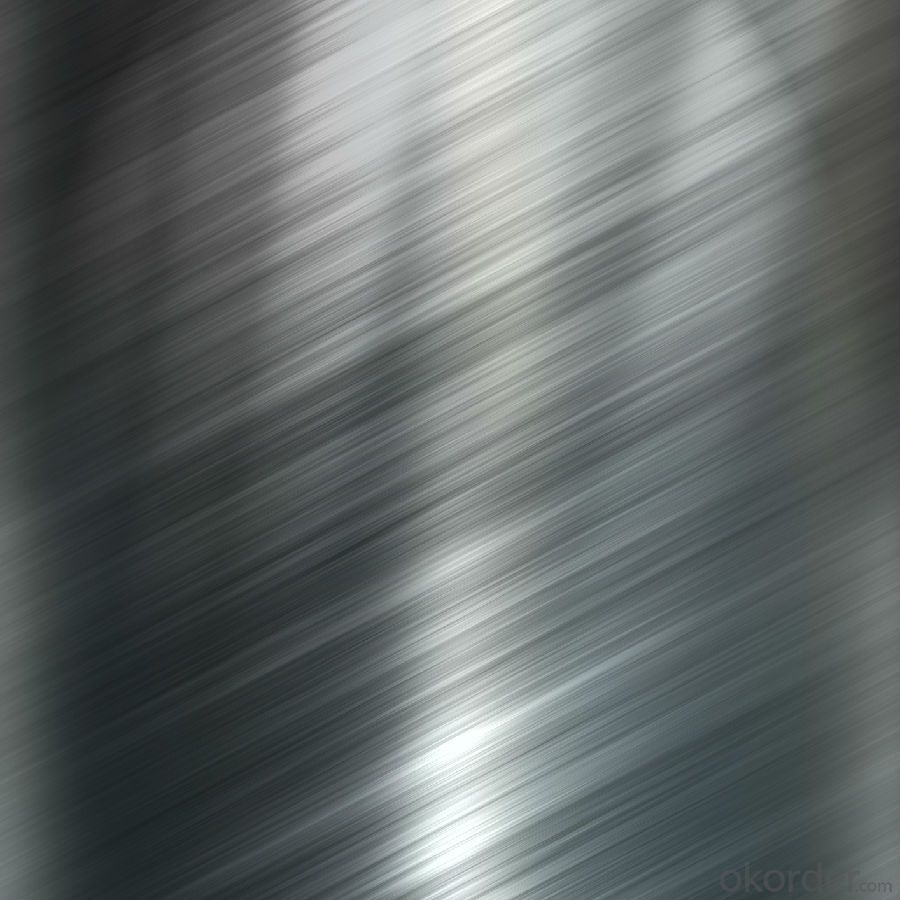
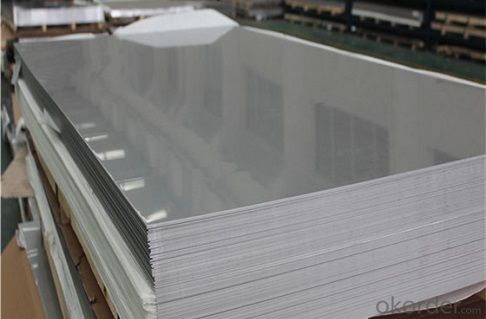
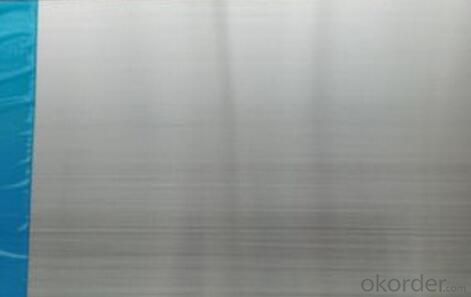

- Q: How do you restore the shine on a stainless steel sheet?
- Achieving a polished appearance for a stainless steel sheet can be accomplished by following a few uncomplicated steps. Initially, it is crucial to ensure the cleanliness of the surface by employing a soft cloth or sponge, as well as a mild detergent mixed with warm water, to wipe away any dirt or debris. Subsequently, the soap residue should be rinsed off and the sheet thoroughly dried. Following this, a minute amount of stainless steel cleaner or polish should be applied to a clean, soft cloth. In a circular motion, gently rub the cleaner onto the stainless steel sheet, paying particular attention to areas that exhibit visible marks or dullness. It is important to adhere to the instructions provided by the manufacturer for the specific cleaner or polish being utilized. After the cleaner has been applied, allow it to remain on the surface for several minutes, permitting it to work its magic. Then, utilizing a fresh section of the cloth, buff the stainless steel sheet by employing circular motions until the shine begins to manifest. This process should be continued until satisfaction with the results is achieved. If a specialized stainless steel cleaner or polish is not available, household items can also be utilized to restore the shine. For instance, a paste can be formed by combining baking soda and water, which can then be applied to the sheet. Gently rub the paste onto the surface using a soft cloth and rinse it off thoroughly. Furthermore, vinegar or lemon juice can be employed to eliminate stains or spots. Applying a small quantity of vinegar or lemon juice to a cloth and rubbing it onto the stainless steel sheet, followed by rinsing and thorough drying, can effectively remove such blemishes. It is imperative to always test any cleaning method or product on a small, inconspicuous area of the stainless steel sheet before employing it on the entire surface. This will ensure that no damage or discoloration occurs.
- Q: Can stainless steel sheets be used for wire mesh?
- Certainly, wire mesh can be made from stainless steel sheets. Stainless steel, being a highly versatile material, finds extensive usage across numerous applications owing to its exceptional durability, resistance to corrosion, and strength. Once stainless steel sheets undergo processing to transform into wire mesh, they acquire a robust and dependable mesh structure. Industries like construction, agriculture, mining, and filtration often employ stainless steel wire mesh due to its remarkable ability to endure harsh environments, withstand rust and corrosion, and uphold its structural integrity throughout time.
- Q: Are stainless steel sheets suitable for laser cutting?
- Indeed, laser cutting proves to be a suitable technique for cutting stainless steel sheets. By effortlessly penetrating the material, lasers facilitate the creation of precise and pristine cuts. The elevated heat resistance of stainless steel sheets further renders them ideal for laser cutting, as they endure the intense heat produced by the laser beam. Moreover, owing to their exceptional corrosion resistance, stainless steel sheets enjoy significant popularity across diverse industries. The utilization of laser cutting guarantees minimal distortion and eliminates any physical contact with the material, thereby yielding a finished product of superior quality.
- Q: How do you determine the weight of a stainless steel sheet?
- To determine the weight of a stainless steel sheet, one must take into account its dimensions, thickness, and density. The first step involves using a measuring tool, such as a ruler or caliper, to measure the length, width, and thickness of the sheet. It is crucial to ensure that all measurements are taken in the same unit of measurement, such as inches or millimeters, for accuracy. Next, the density of stainless steel needs to be determined. Typically, stainless steel has a density of approximately 7.9 grams per cubic centimeter (g/cm³) or 7900 kilograms per cubic meter (kg/m³). However, it is important to note that this value may slightly vary depending on the specific grade or alloy of stainless steel being used. Once the dimensions and density are known, the weight can be calculated using the formula: weight = volume × density. To find the volume, one should multiply the length, width, and thickness of the sheet. For instance, if a stainless steel sheet measures 1 meter by 1 meter and has a thickness of 2 millimeters, the volume would be 0.001 cubic meters (1m x 1m x 0.002m). By utilizing the density of stainless steel (7900 kg/m³), one can then determine the weight by multiplying the volume by the density. In the given example, the weight of the stainless steel sheet would amount to 7.9 kilograms (0.001m³ x 7900 kg/m³). It is essential to bear in mind that this calculation provides an approximate weight, assuming a consistent thickness throughout the entire sheet. Furthermore, variations in composition or manufacturing processes may result in slight deviations in the density of the stainless steel, thereby affecting the accuracy of the weight calculation.
- Q: Can stainless steel sheets be used for architectural façades?
- Architectural façades can indeed incorporate stainless steel sheets. With their durability and versatility, stainless steel proves to be an advantageous material for such applications. Its resistance to corrosion, weathering, and staining makes it perfect for outdoor use. Moreover, stainless steel sheets can be manipulated into various shapes and sizes, allowing for a wide array of design possibilities. Furthermore, stainless steel can be finished in diverse ways, including brushing, polishing, or coloring, which adds further aesthetic options. Its strength and rigidity also make it suitable for large installations. All in all, stainless steel sheets offer durability, aesthetic appeal, and design flexibility, making them a highly sought-after choice for architectural façades.
- Q: Are stainless steel sheets suitable for kitchen countertops?
- Kitchen countertops made from stainless steel sheets are highly suitable. They have numerous benefits that make them a popular choice. Firstly, stainless steel is incredibly durable and can withstand stains, heat, and scratches. This makes it perfect for the kitchen, where spills, hot pans, and knife marks are common. Moreover, stainless steel is non-porous, meaning it doesn't harbor bacteria or germs. This makes it an excellent choice for food preparation areas, as it ensures hygiene. Cleaning and maintaining stainless steel is also a breeze, as it doesn't require any special products or sealants. A simple wipe with a damp cloth is usually sufficient to keep it looking shiny and new. Additionally, stainless steel has a sleek and modern appearance that complements various kitchen styles and designs. It can be paired with different cabinetry colors and materials, creating a timeless and contemporary look. Stainless steel is also versatile, as it can be custom fabricated to fit any kitchen layout, including seamless integration with sinks and backsplashes. Lastly, stainless steel is an environmentally friendly option. It is a recyclable material, and many stainless steel products are made from recycled steel. This makes it a sustainable choice for those who want to minimize their environmental impact. In conclusion, stainless steel sheets are an excellent option for kitchen countertops due to their durability, resistance to stains and scratches, hygienic properties, easy maintenance, sleek appearance, and environmental friendliness.
- Q: Are stainless steel sheets safe for medical applications?
- Yes, stainless steel sheets are safe for medical applications. They are widely used in the medical industry due to their excellent corrosion resistance, biocompatibility, and durability. Stainless steel is easy to clean, sterilize, and maintain, making it suitable for surgical instruments, medical devices, and equipment used in healthcare settings.
- Q: Can stainless steel sheets be used for signage?
- Yes, stainless steel sheets can be used for signage. Stainless steel is a durable and weather-resistant material, making it suitable for both indoor and outdoor signage applications. It offers a sleek and professional look, and can be customized with various finishes and colors to meet specific design requirements.
- Q: What are the different types of perforations available for stainless steel sheets?
- There are several different types of perforations available for stainless steel sheets, each serving a specific purpose and offering unique characteristics. Here are some of the most common types: 1. Round Perforations: These are the most basic and widely used type of perforations. They consist of evenly spaced round holes punched through the stainless steel sheet. Round perforations offer good airflow and visibility while providing adequate strength and durability. 2. Square Perforations: Similar to round perforations, square perforations feature evenly spaced square holes instead of round ones. Square perforations are often preferred when a more geometric and modern aesthetic is desired, as they can create a visually appealing pattern. 3. Slotted Perforations: Slotted perforations are characterized by elongated, rectangular holes that are punched through the stainless steel sheet. This type of perforation allows for better drainage and airflow, making it suitable for applications such as grilles, screens, and filters. 4. Hexagonal Perforations: Hexagonal perforations feature hexagon-shaped holes that are punched through the stainless steel sheet. This type of perforation offers an interesting visual pattern and can provide better strength and rigidity compared to round or square perforations. 5. Decorative Perforations: These perforations are specifically designed to enhance the aesthetic appeal of stainless steel sheets. They can come in various shapes, sizes, and patterns, including floral, geometric, or custom designs. Decorative perforations are often used in architectural applications, interior design, and decorative panels. 6. Micro Perforations: Micro perforations are extremely small holes that are closely spaced in the stainless steel sheet. They are commonly used in applications where a high level of precision and fine filtering is required, such as speaker grilles, ventilation systems, or sieves. It's important to note that the availability of specific perforation types may vary depending on the supplier or manufacturer. Additionally, some suppliers may offer custom perforation options to meet unique requirements or design preferences.
- Q: How do you prevent pitting corrosion on stainless steel sheets?
- To prevent pitting corrosion on stainless steel sheets, there are several measures that can be taken: 1. Proper alloy selection: Choosing the right grade of stainless steel with high resistance to corrosion is crucial. Grades such as 316 and 904L are known for their excellent resistance to pitting corrosion. 2. Passivation: Stainless steel sheets should be passivated after fabrication to remove any free iron or contaminants on the surface. Passivation involves treating the sheets with an acid solution, followed by a thorough rinse and drying. This helps to restore the protective chromium oxide layer on the surface, enhancing corrosion resistance. 3. Regular cleaning and maintenance: Stainless steel sheets should be cleaned regularly to remove any dirt, debris, or contaminants that can lead to pitting corrosion. Mild soap, water, and a soft cloth or sponge can be used for routine cleaning. Harsh or abrasive cleaners should be avoided. 4. Avoid exposure to aggressive environments: Stainless steel sheets should be protected from exposure to chemicals, chlorides, acids, and other corrosive substances. If such exposure is unavoidable, proper measures like the use of protective coatings or barriers should be implemented. 5. Avoid stagnant conditions: Pitting corrosion is often accelerated in stagnant or low-flow conditions where oxygen levels are depleted. Ensuring proper ventilation and circulation of air or fluids can help prevent pitting corrosion on stainless steel sheets. 6. Regular inspection and maintenance: Periodic visual inspection and monitoring of stainless steel sheets can help identify any early signs of pitting corrosion. If any pitting is noticed, immediate action should be taken to address the issue, such as applying a suitable corrosion inhibitor or protective coating. By following these preventive measures, it is possible to minimize the risk of pitting corrosion on stainless steel sheets, ensuring their long-term durability and performance.
Send your message to us
316 Hot Rolled Stainless Steel Sheet / Plate
- Loading Port:
- Shanghai
- Payment Terms:
- TT OR LC
- Min Order Qty:
- 1 m.t.
- Supply Capability:
- 20000 m.t./month
OKorder Service Pledge
OKorder Financial Service
Similar products
Hot products
Hot Searches
Related keywords
